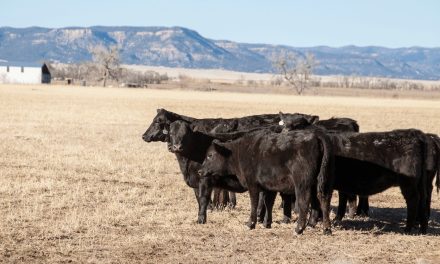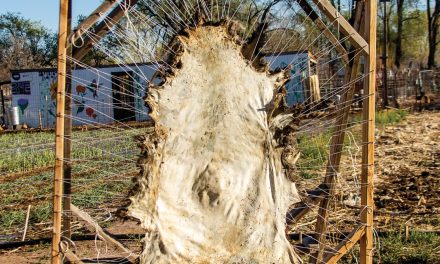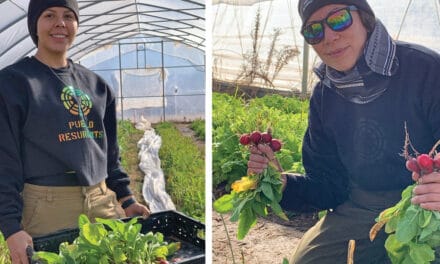Beekeeping Brings Wellness to Humans and Bees
By Willy Carleton
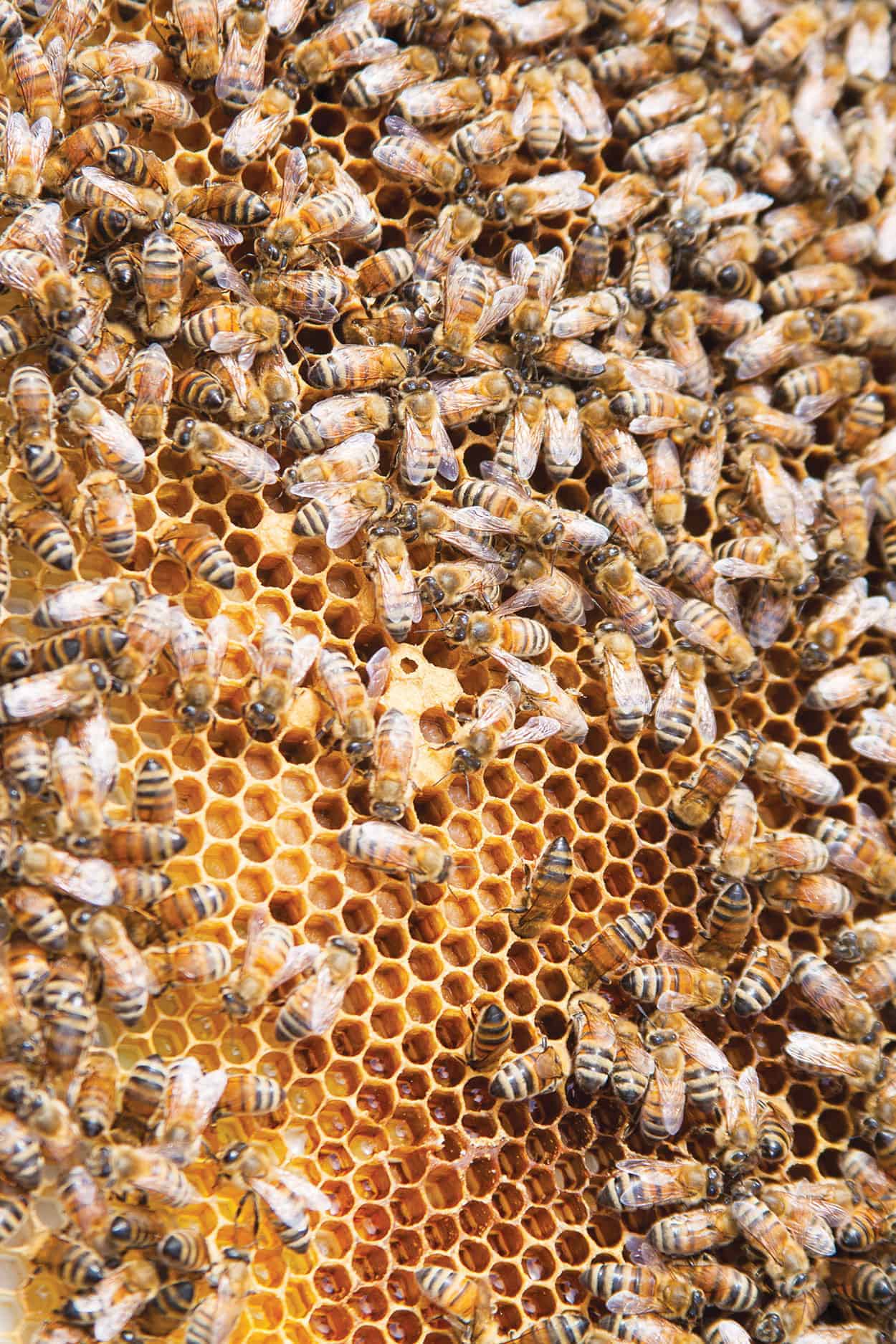
On a warm October day in a quiet neighborhood in northeast Albuquerque, we donned white beekeeping suits and veils, lit a smoker that gently billowed clouds to calm the bees, and lifted the roof of a wooden box filled with a buzzing beehive. “That’s a beautiful hive,” said Voyce Durling-Jones, founder of the Santa Fe-based Hoshindo Society of the Americas (HSA), as she lifted a dripping, honey-filled comb teeming with bees.
Beside her, two military veterans, who had recently undertaken beekeeping in their yards under Durling-Jones’s tutelage, smiled beneath their veils. Their hives are part of a new project by the Bee Corps called Honey for Our Wounds. The Bee Corps, which is part of the nonprofit HSA, developed Honey for Our Wounds to provide women veterans an opportunity to learn the art of beekeeping as both a personal therapy and an exercise in helping protect a bee population in peril. Durling-Jones sees the project as an opportunity to tackle two large problems—the societal consequences of seemingly endless war and the deleterious effects of pesticide use on the bee populations we depend on—one hive at a time.
For Durling-Jones, the journey toward this project has followed a long, winding path that stems from a trip to Japan in 1994. Suffering from health issues, she met a master of an esoteric and ancient form of Japanese bee medicine called hoshindo (meaning “the way of the bee”), which appeared to help many ailing people when other forms of medicine couldn’t. She explained that hoshindo uses the stinger of a bee to tap along the body and bring the immune system into balance. Hoshindo derives from a legacy of bee-venom medicine that goes back five thousand years, before advances in metallurgy made acupuncture possible. Certified practitioners of hoshindo must raise the bees they use to treat patients, and, unlike those practicing the American method of apitherapy, they primarily use “taps” of a stinger rather than barraging the body with full stings. This painless method, according to Durling-Jones, helps to balance the immune system with “a gentle wave, rather than a tsunami.” After two years of study and training in Japan, Durling-Jones returned to the United States to practice hoshindo and teach its methods to new practitioners. She is the only hoshindo sensei outside of Asia and has been practicing hoshindo in Santa Fe since 2003, helping people with a long list of ailments, including shingles, chronic Lyme infections, and rheumatoid arthritis. In 2007, she created the Hoshindo Healing Arts Institute, a center for Hoshindo Japanese Meridian Apitherapy, and began to train students.
I asked Durling-Jones about the potential healing benefits of bees. Her soft blue eyes sparkled with passion as she explained the importance and beauty of the honeybee. “Did you know,” she asked with a smile, “that bees can fly thirty miles per hour, or that their wings’ vibration creates sound frequencies in the key of C?” As I inevitably shook my head, she continued on a more serious note. “Without bees,” she explained, “we humans cannot survive for long. They provide us not only with food through their honey and through their pollination of fruits, nuts, and vegetables; they also provide medicines for various health issues.” Their medicinal properties are vast, she made clear. The honey is a natural antibiotic, and so is the hive-protecting propolis, which is also antiviral, antimicrobial, and antifungal. Bee pollen is rich in protein, and royal jelly is a natural nutraceutical, high in nucleic acids. Last, but certainly not least, the bee’s venom itself is highly medicinal. According to Durling-Jones, it contains many beneficial chemicals and compounds, such as acetylcholine, melittin, and dopamine, and is one of nature’s most powerful anti-inflammatories.

Coating top bars to be placed in the hives with wax for use by the bees as a base to begin building comb.
From left to right: Gretchen Rieck, Gloria Worthington, Patricia Gaston, and Janet Frye. Photo by Sabrina Durling-Jones.
As she developed her practice of hoshindo in Santa Fe, Durling-Jones grew increasingly concerned about widespread colony collapse disorder and the overall welfare of bees. Four years ago, after a family discussion, she and her children decided to launch the Bee Corps, with Sabrina Durling-Jones, Durling-Jones’ daughter, as director. The organization plans to initiate education projects with a variety of groups in New Mexico to spread the word about how to protect bee populations. The Bee Corps also aims to promote “bee sanctuary cities” that will urge city planners and officials to incorporate bee forage into city planting designs and eliminate the use of pesticides and herbicides, which can decimate bee populations, in public spaces such as schools and parks. The group’s first project is Honey for Our Wounds.
“It’s Honey for Our Wounds,” Durling-Jones emphasized shortly after we arrived to the backyard of another veteran beekeeper, Lieutenant Colonel Pat Gaston (Army Retired), “because while the wounds of war directly affect those serving in the military and their families, war wounds all of us as a nation.” Gaston sat on the bed of a pickup truck, squinting in the autumn sun and nodding slowly. Behind her, bees swirled above the top-bar hive in her small backyard. A twenty-two year veteran who served as a fuel manager for operations throughout the Middle East, including Iraq and Afghanistan, Gaston has also served as the president of the Women Veterans of New Mexico, and she began sharing the unique challenges female veterans face, both while they serve and after. One in five women veterans has been assaulted at some point during her service, she explained. Women in the military, she added, “have to worry about the enemy, inside the wire and outside the wire.”
Finding help can be difficult. Women often fear the consequences (such as lack of promotion, ostracization, charges of insubordination, or even physical retaliation from male military personnel) of reporting sexual harassment or assault while serving, and they face unique challenges of dealing with their traumas as veterans. Female veterans experience higher rates of homelessness than male veterans and have a suicide rate six times higher than male vets. While there are avenues of support for all veterans, few exist just for women. All vets can go to the VA, but, according to Gaston, many women opt out of the VA because it is so heavily male. “If you’re a woman and you have been raped or sexually assaulted,” Gaston explains, “you probably will want to be in an all-female [veterans] group.”
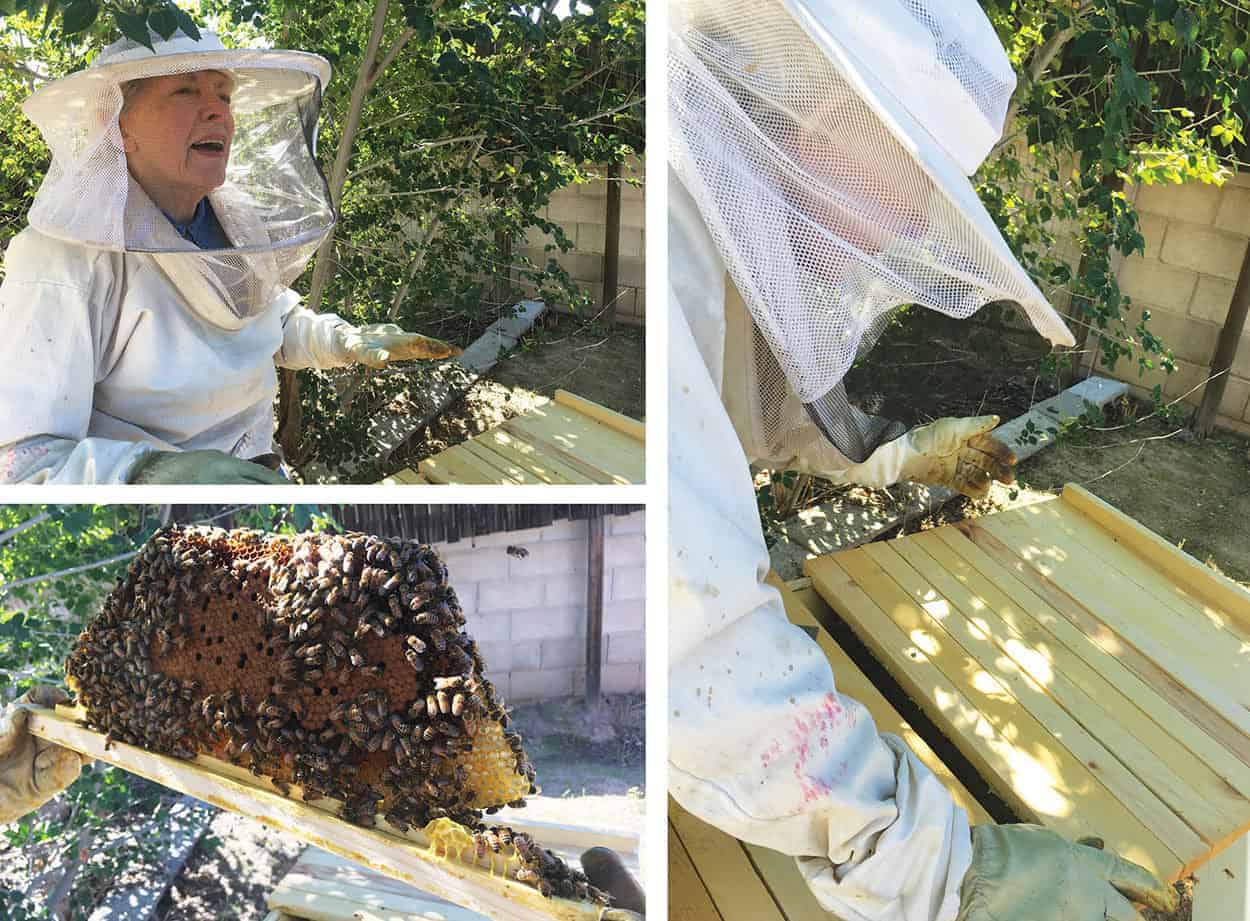
Durling-Jones inspects the hive of Honey For Our Wounds participant, Janet Frye, and offers beekeeping guidance at Frye’s home in Albuquerque. Photos by Willy Carleton.
For this reason, Women Veterans of New Mexico serves a crucial function for veterans in the state. Of its many services, linking veterans to Honey for Our Wounds is one of its newest. When Durling-Jones approached Gaston last year about the project, Gaston was cautiously enthusiastic. “You can give it a try,” Durling-Jones recalls Gaston telling her, “but no guarantees there will be interest.” To the surprise of both women, three veterans, along with Gaston, jumped on board, and the project has been off to a quick start. Durling-Jones offered the four women a crash course on beekeeping over the course of eight Sundays last winter, helped install the hives in their yards, and has driven down to Albuquerque to check on the hives each season. Early next year, the organization plans to recruit new women veterans to learn beekeeping under the training of Durling-Jones and the mentorship of this year’s beekeepers.
As it turns out, working with bees has many appeals for women veterans. The idea of protecting bees, for their sake and ours, seems to resonate with the veterans’ commitment to serve their community. “It’s really good therapy,” says Navy veteran and Honey for Our Wounds participant Janet Frye. “You’re doing something for your community. It’s a small form of giving back.” Air Force veteran Gloria Worthington nodded her head, adding, “You are part of the bee community and that feels good. It can be very peaceful. You can meditate to that buzzing.”
Beyond the therapeutic benefits of beekeeping lies a deeper appeal. “The beehive is really one being,” Durling-Jones explained. She described the hive as a superorganism where each bee functions to serve a larger colony that itself behaves like an individual organism. The veterans nodded. As these veterans explained, most bees in the hive—the workers and the queen—are female; and just as these female bees serve their hive, women veterans serve their country and, often once they return, their communities. These vets see bees as apt metaphors for their lives. “They are women helping the world, and we are women helping the world,” says Worthington with a little laugh. “We’re all females helping females.”
For more information on the Bee Corps, and to learn about their 2018 concert series, please visit
www.thebeecorps.org
Edible celebrates New Mexico's food culture, season by season. We believe that knowing where our food comes from is a powerful thing. With our high-quality, aesthetically pleasing and informative publication, we inspire readers to support and celebrate the growers, producers, chefs, beverage and food artisans, and other food professionals in our community.






